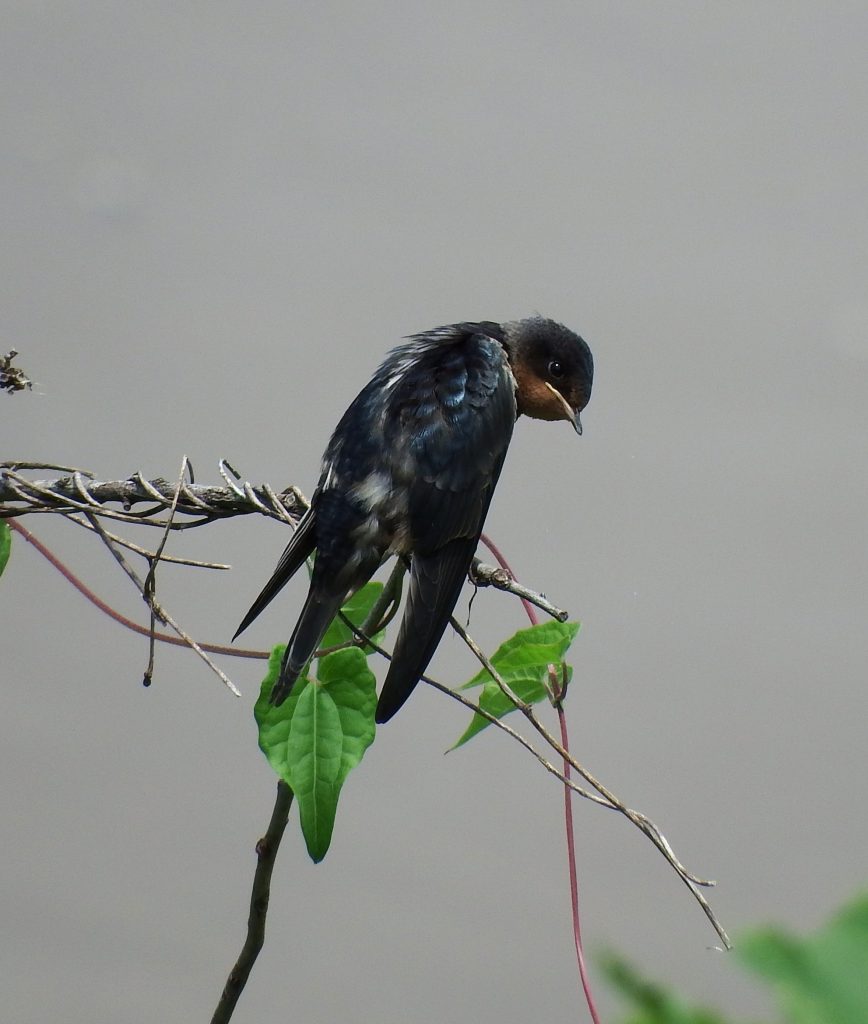Beavers, barn swallows and butterflies

Our red-shouldered hawk chick has left the nest. So, let’s celebrate with more videos!
First, foremost, and forever amazing: We have BEAVERS ON BUFFALO BAYOU!!! Fellow master naturalist Ethelyn Kuldell recently captured video of a beaver just swimming along between the Rosemont bridge (by the police memorial) and the Studemont bridge. It was taken around 7:30 am.
As faithful readers know, I started this blog with one hope and that was to document and write about the beavers on Buffalo Bayou. I knew in my heart I had done it, but we humans are such a visual species that we really don’t think we know something until we’ve seen it. So take a look at a Buffalo Bayou beaver happily paddling along within the shadow of downtown!
Less surprising perhaps but none the less charming for being so, are the barn swallows who are nesting under the Studemont bridge. A few weeks ago, their smiling faces prompted a discussion of bird lips and gapes. This video of a clutch of five barn swallow chicks is too cute not to share.
Barn swallows have between three and seven eggs in a clutch, so these five aren’t out of the ordinary, but they do look a bit squished in that nest. The video is edited down from about nine minutes of footage. During that time, I believe the parents visited eleven times and that every chick got fed, even that rather incompetent one who is usually second from the right.
Near the 47 second mark, a parent arrives with a mouth full of flying ants. A few get loose and walk off. I noticed what looks like a spider’s web at the left side of the nest. A spider might find that a good place to snag run-away ants so long as you can keep from being eaten by those swallows. Specialized spider or perhaps it’s just fluff?
At one minute thirteen seconds, we get to see something interesting. Poop! It’s interesting for a couple of reasons. First, notice that the two birds, probably not more than a week old, both turn around and poop out of the nest rather than into it. Were that our children were so easily potty trained!
The second thing to take note of is the two-hole situation. I’ve been struck by this with my own chickens. Birds (and most animals besides placental mammals) eat through one hole and everything comes out a second hole. This includes what we think of as pee, poo and eggs. We placental mammals are four-holers. One for eating, one for pee, one for poo and one dedicated to the making and delivering of babies. I must say that I appreciate this arrangement and applaud evolution for her thoughtfulness.
The last video is a black swallowtail butterfly on what I think is American germander. If you are trying to identify butterflies, one of the ways to narrow down what you are looking at is that all swallowtails flutter when they are sipping nectar. Most other types of butterflies have their wings either folded or spread. This beautiful black swallowtail will now demonstrate:
Last, but not least, the photo at the top of this post isn’t entirely related to the videos, but I am in love with. It is a juvenile barn swallow taking a rest alongside the bayou. The Park is full of juvenile birds right now. Mature swallows rarely perch, but the juveniles sure do. You can see them in the bushes all along the bayou. Their parents will find and feed them so that next year, they can be the one’s raising the chicks.

